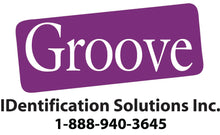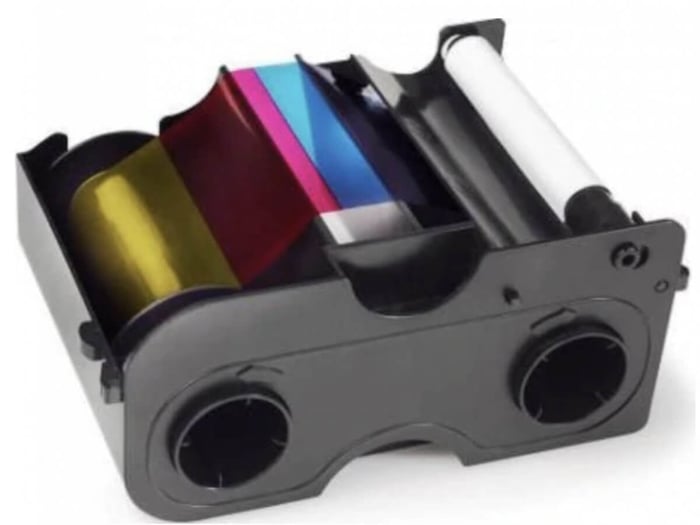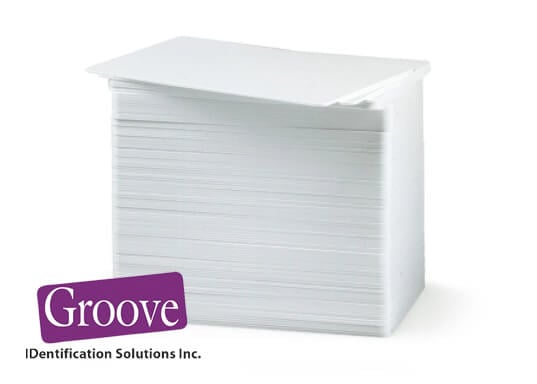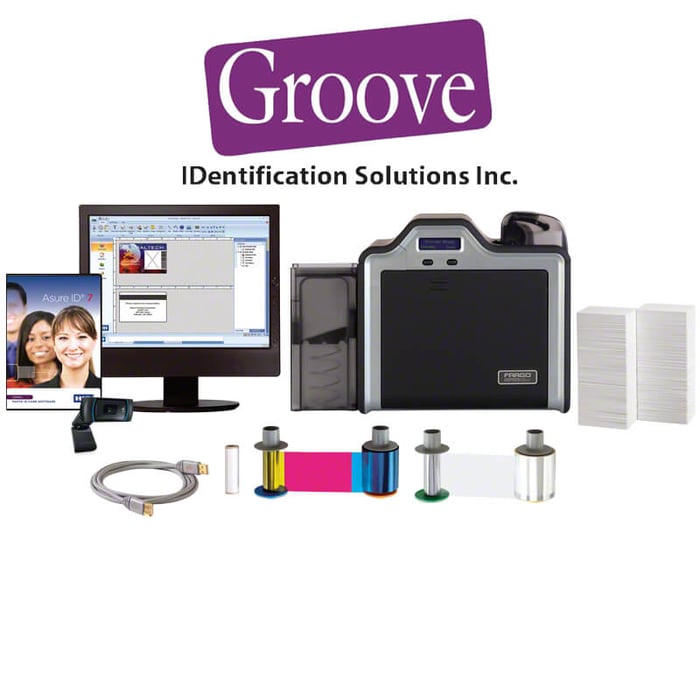Making Sense of ID Card Printer Ribbons
ID card printer ribbons use a series of codes that some of our customers find difficult to decipher. Find out what each letter code stands for and how to use the codes to choose the ribbon that meets your needs.
Our customer service team often takes calls from people who are confused about how to choose the best ribbon for their ID card printer. Navigating the options can seem daunting at first but once you have the basics clear, it’s not as complicated as it seems.
The simplest type of ribbon for ID card printing is monochrome. As its name implies, it only produces one colour, usually black. If your cards don’t have any photo ID or other colour content, this ribbon will meet your needs while saving you money.
Even so, these days, most facilities use cards with more features than a monochrome ribbon can deliver. The first hurdle to overcome to find your way through the ribbon maze is learning colour codes.
First Hurdle Is Learning Colour Codes
In the printing business, the three standard ink colours each have a one-letter designation. “Y” is yellow, “M” is magenta (red), and “C” is cyan (blue). Now comes the confusing part. Printers refer to black ink as “K,” which stands for “key.”
We don’t need to delve into all the history behind why the printing business uses “K” instead of “B,” just to choose a ribbon. remember that “K” means black. So, when printers talk about using the regular colours with black text, they say “YMCK.”
Printing ID cards involves a couple of other processes beyond the ink colours. Your facility may also need to protect your cards with an overlay. The code for that is “O.” Datacard and Polaroid use the term “topcoat,” but it’s the same thing. So, their code is “T,” but that’s unusual.
Some ribbons use two other codes. “H” stands for “heat seal.” “I” stands for “inhibit.” Ribbons with an “I” panel prevent the device from applying print to some parts of the card, like the signature panel or the chip.
Making Sense of What Each Type of Ribbon Can Do
Now that we’ve mastered our codes, we can make sense of what each type of ribbon can do.
|
Code |
Function |
|
YMCKO |
Most of our customers opt for this ribbon type. It provides the usual colours along with black for text and barcodes. It then protects the card content with an overlay. |
|
YMC |
This ribbon provides colours, but no black and no overlay. You should only choose it for laminating or retransfer printers. Otherwise, without an overlay, your cards will look like the ink isn’t dry. The colours will also smear. Without black, there’s no good way to add text or barcodes to your cards. |
|
YMCK |
This ribbon enables you to print text and barcodes, but it’s still limited to laminating or retransfer printers. To protect your colours, you still need an overlay |
|
YMCKOK |
Here, we have two codes for “black.” The industry uses this to indicate that front of the card has colour + black, while the back side includes only black. This can reduce your printing costs. |
|
YMCKK |
This ribbon also prints colour on the front and black on the back. The missing “O” tells you that there is no overlay function. That limits this ribbon to retransfer or laminating printers. |
|
YMCKIKI |
This ribbon has inhibitors to prevent printing in specific places on both the front and the back of the card. |
|
YMCKT |
This is the same as a YMCKO card. It’s just using the Datacard and Polaroid term “topcoat” instead of the industry standard term “overlay.” |
|
YMCIKH |
Only the Fargo HPD5000 retransfer printer uses this ribbon code. It has an inhibitor as well as a heat seal to ensure that the film adheres to uneven card surfaces. |
We’re Here to Help
We hope this clarifies how to choose the right ribbon for your facility’s needs. Of course, our support team at Groove would be pleased to discuss your application with you to make sure you’re ordering the right ribbon for the job.
We can work with you to make sense of the codes and guide you to the right choice. We’re happy to discuss the range of product options and help you choose the one that’s right for your facility.
We’d love to hear about the ribbon types our customers use in their applications. We’d also be pleased to answer any questions you may have.
Please share your thoughts in the comments section below. By sharing information, we can all make our facilities safer.






